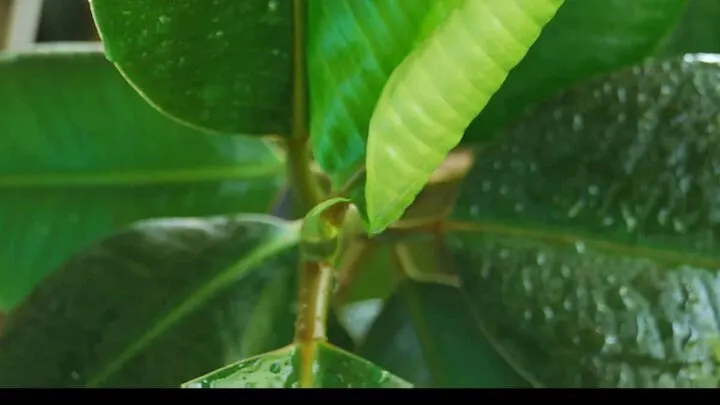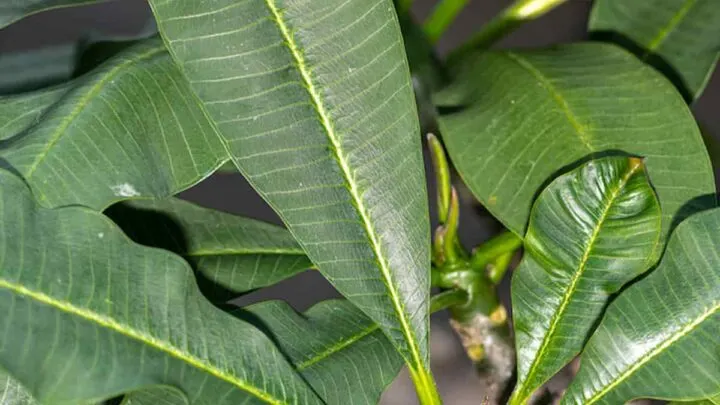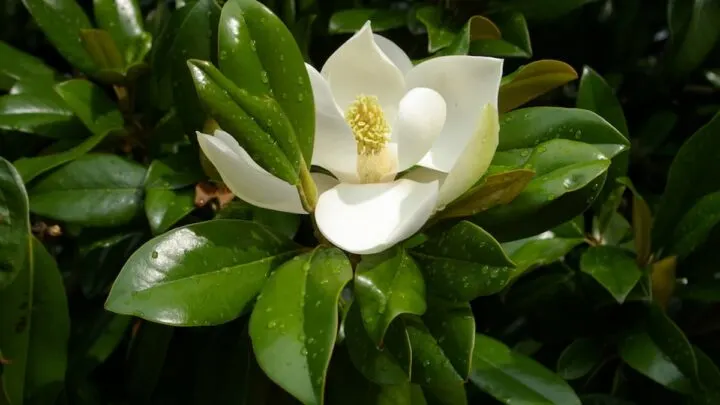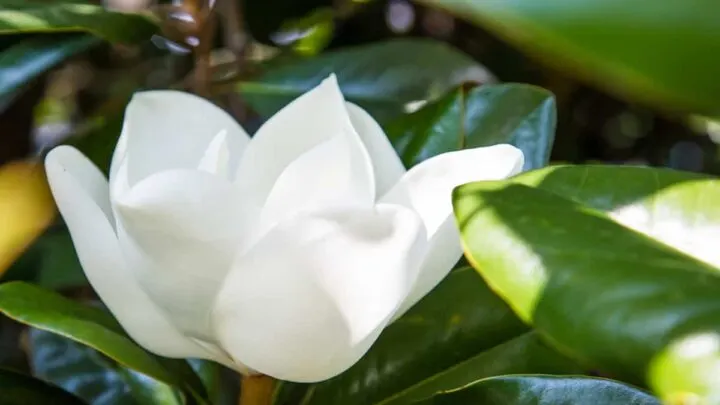Houseplants are a ton of fun to grow. For most, it’s a much simpler approach to gardening, but just as fun as you can explore all the unique ways to help them thrive. Rubber plants and Magnolias are some of the more popular ones to grow. At first glance, you might think they are the same thing, but they are actually quite different.
I thought it’d be nice to do a unique comparison of the two plants so you can get an idea of how each one grows. Below I’ll cover the aesthetics of each plant, care tips such as lighting and soil requirements, as well as their origin.
With that said, let’s get into it!

Rubber Plant
First, we’ll start with the rubber plant; a house plant known to grow extremely tall. They even grow in the wild too! First, the looks:
Looks
The rubber plant grows straight upwards, growing 6-10 feet indoors. Rubber trees in the wild can get to 100 feet tall. Their thick, green, waxy leaves grow off from the main stem or stalk. The leaves are shaped like a long oval.
Care
The rubber plant needs 6-8 hours of indirect sunlight daily; the leaves will easily burn when facing direct sunlight. They like a naturally humid environment.
The soil only needs to be watered once a week; however, be sure to keep it moist (as it would be in its natural habitat). Do not overwater a rubber plant, as this will significantly stunt the plant’s growth and even cause death.
The rubber plants’ leaves must be wiped down once a week and kept free from dust. Use a gentle spray bottle or a damp cloth.
Rubber plants are very easy to care for, making them great indoor plants.

Lifespan
With the proper care, a common indoor rubber plant can live for around ten years. In their natural habitat, they will live for up to 100 years.
Soil Types
You can use regular house potting mix soil to plant rubber plants. You must be sure that the soil is well-draining. Be sure to have a pot that drains properly when planting your rubber plant.
Fertilizer
Feed your rubber plant once a month or as needed. If the plant leaves begin to look yellow, the plant may require nitrogen. Rubber plants are heavy nitrogen feeders. Use a fertilizer with an NPK with high nitrogen content, for instance, 20-15-10.
Native Areas
The rubber plant is native to the South American rainforest region—places like Peru, Bolivia, Columbia, Venezuela, and Ecuador. Certain rubber plants are also native to Southeast Asia and even parts of Africa.

Uses
A rubber plant’s role as a common indoor houseplant is to help purify the air and is a natural defense system against airborne allergens.
A native rubber tree is used for, you guess it! Rubber. The sap is extracted from the tree (this is latex) and makes rubber.
Do NOT consume a rubber plant or the leaves! It can be highly toxic to humans, cats, and horses.
Symbolism
According to feng shui teachings, a rubber plant placed in a home will bring good luck, fortune, and happiness.
Magnolia
Up next is the Magnolia plant, a narrow plant that blooms beautiful flowers in the spring. Let’s hop into the looks first!
Looks
Magnolia trees are usually medium-sized or on the smaller side for trees. They have tall, not too wide trunks with thin and smooth bark. The trunk contains branches that hold many green, oblong, oval-shaped waxy leaves (similar to a rubber plant).
Their most distinctive trait is their beautiful flowers that bloom at the bases of the branches. The flowers can be cream or pink-colored in 6-12 leaf arrangements. Blooming from March-April, they give off a deliciously sweet, floral scent.

Care
Magnolias can be grown in almost any climate, as long as they have winter protection. They should be planted in an area that has full sun. However, if you live in an area with very hot summers, they will enjoy being planted in a place with light shade during the hottest parts of the day.
Water a magnolia tree 2-3 times per week for the first six months. After six months, an established magnolia tree can be watered once every other week, as long as the soil stays moist (never soaked).
Prune any dead or diseased-looking branches in the late summer. Use a loper, and never cut more than a third of the tree at a time.
Magnolia trees, like most trees, are self-sufficient and don’t need much care once they are established.
Lifespan
The average lifespan of magnolia trees is 80-120 years.
Soil Types
Magnolia trees prefer soil that is slightly acidic and well-draining. Sandy soil may be okay, only if they are mixed with a type of organic compost. Clay soils compact and hardens too easily, damaging magnolia tree roots. Loamy soils are best for magnolia trees.
Fertilizer
Magnolia trees are not considered heavy feeders. They will only truly need fertilizer at the beginning of the season (spring), right before, and during the flower bloom.
The best fertilizer for a magnolia tree is a more nitrogen-based, slow-releasing fertilizer. For trees, including magnolia trees, a granular-based fertilizer is preferred over a liquid fertilizer. Granular fertilizer with an NPK of something similar to 20-20-15, or 30-20-10, is ideal for the magnolia tree.

Native Areas
The magnolia tree is native to North and South America. They also grow in East Asia and the Himalayas.
Uses
The wood of a magnolia tree is soft and easy to work with. This makes it perfect for building crates, certain furtinatures, and pallets. The wood is also good for smoking meats and gives a great flavor to the meat being smoked.
The Japanese and Chinese people used the bark and the flowers of a magnolia tree for thousands of years. The bark is said to aid in things like asthma, headaches, muscle pains, depression, and anxiety.
The flowers can be made into tea, and help with inflammatory issues, digestion, constipation, and depression. The flavor of magnolia alone is widely popular, especially in Asian cuisine. It is commonly used in drinks, rice dishes, soups, and desserts.
Symbolism
The magnolia tree holds lots of symbolism. Japanese culture is associated with dignity, femininity, and perseverance. In Chinese cultures, it stands for nobility and purity.
Similarities Between Rubber Plant and Magnolia
While the rubber plant and the magnolia tree are very different, they have key similarities.
- Perennials
- Both native to Southeast Asia
- Leaves are very similar in that they are both long oval shaped, and have a waxy green color.
- Prefer similar soil types
- Both prefer high nitrogen fertilizers
Final Thoughts
Whether you decide to grow a Rubber plant or a Magnolia, I think you’ll be happy with either one. They can teach you a lot about indoor gardening and are relatively low maintenance. They are a nice way to spice up the decor in the home and I highly recommend trying your hand at each!

Hi there, my name is Allie and welcome to my blog; GareningWithAllie!
Much of what you see written here is just our personal experiences with gardening. Along with the content I write here, there is also a unique collection of gardening topics covered by some of our close friends. I hope you find everything you read here to be helpful, informative, and something that can make your gardening journey the most lovely experience ever! With that said, Happy Gardening!
